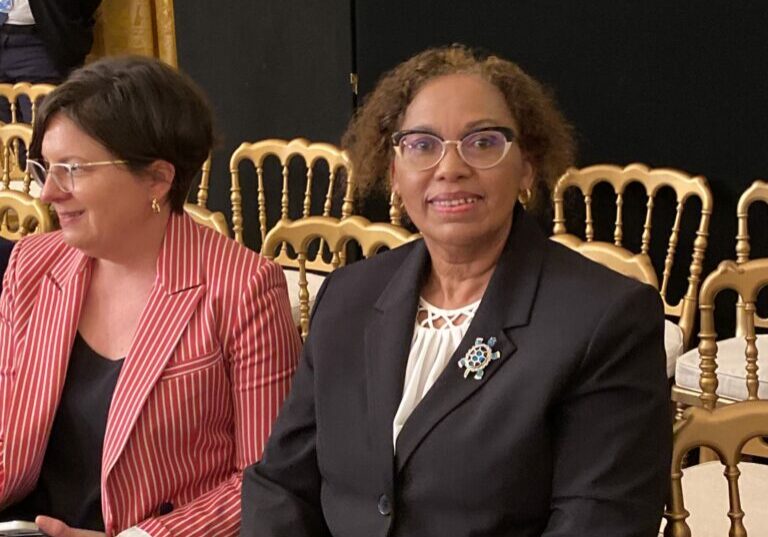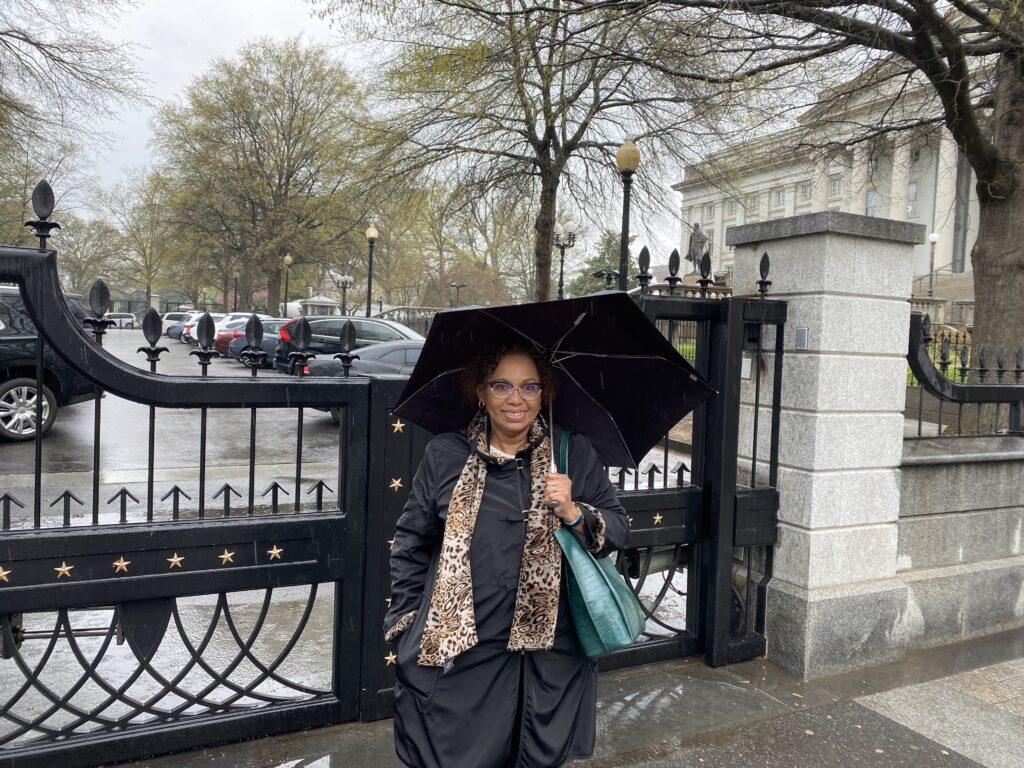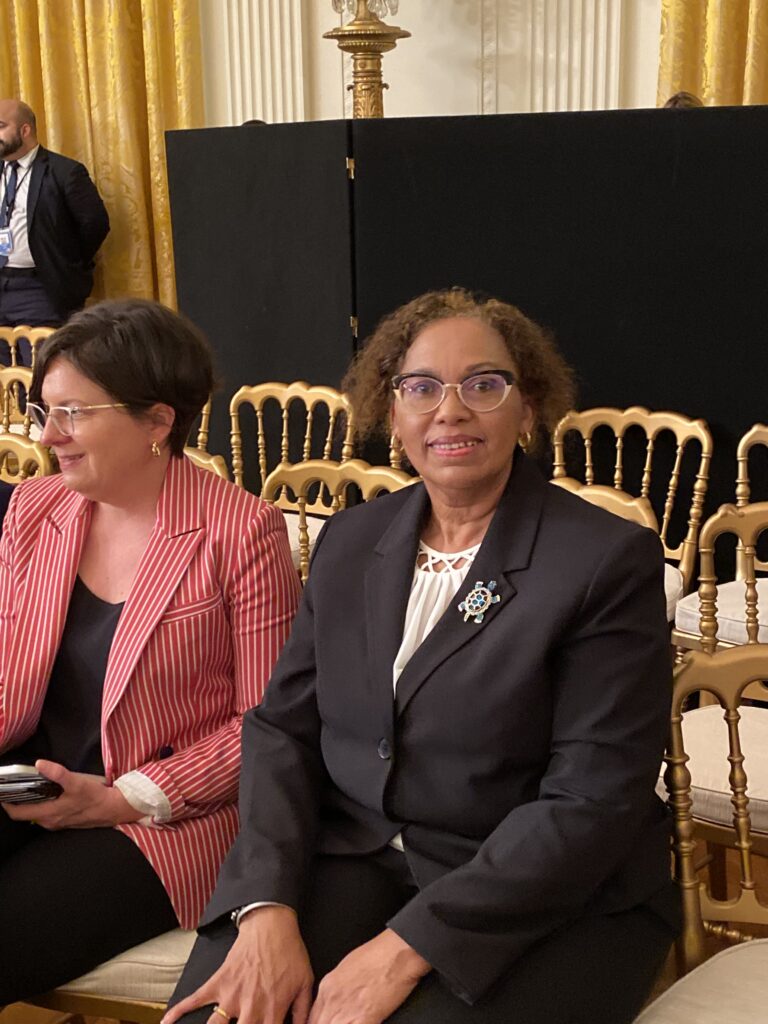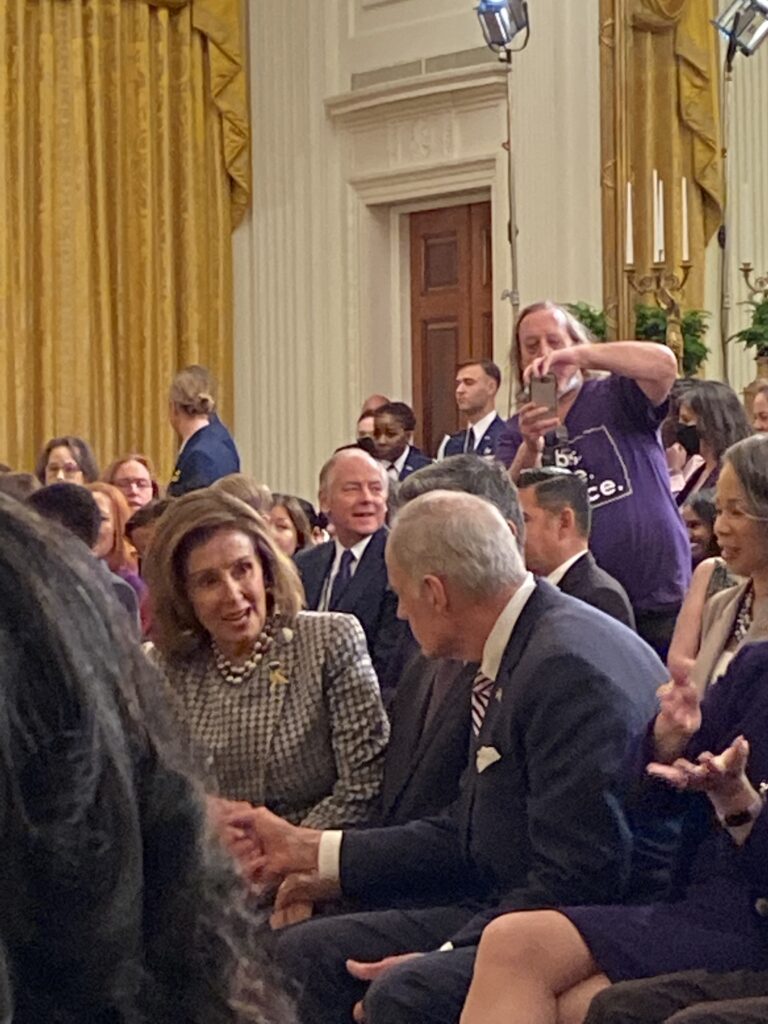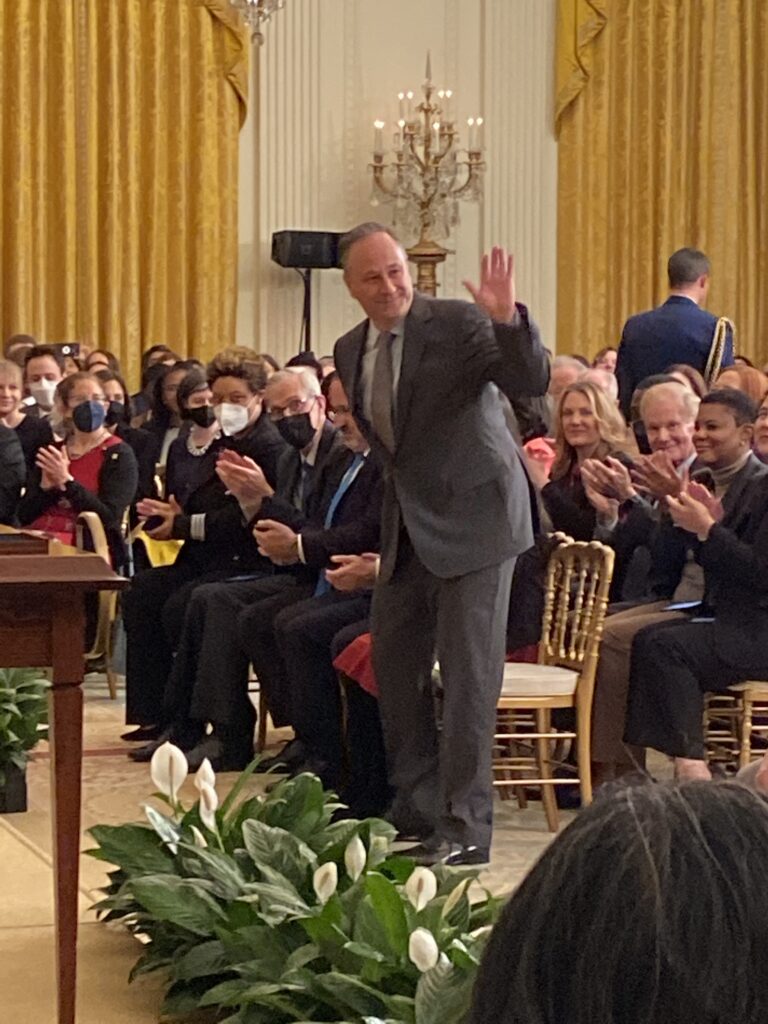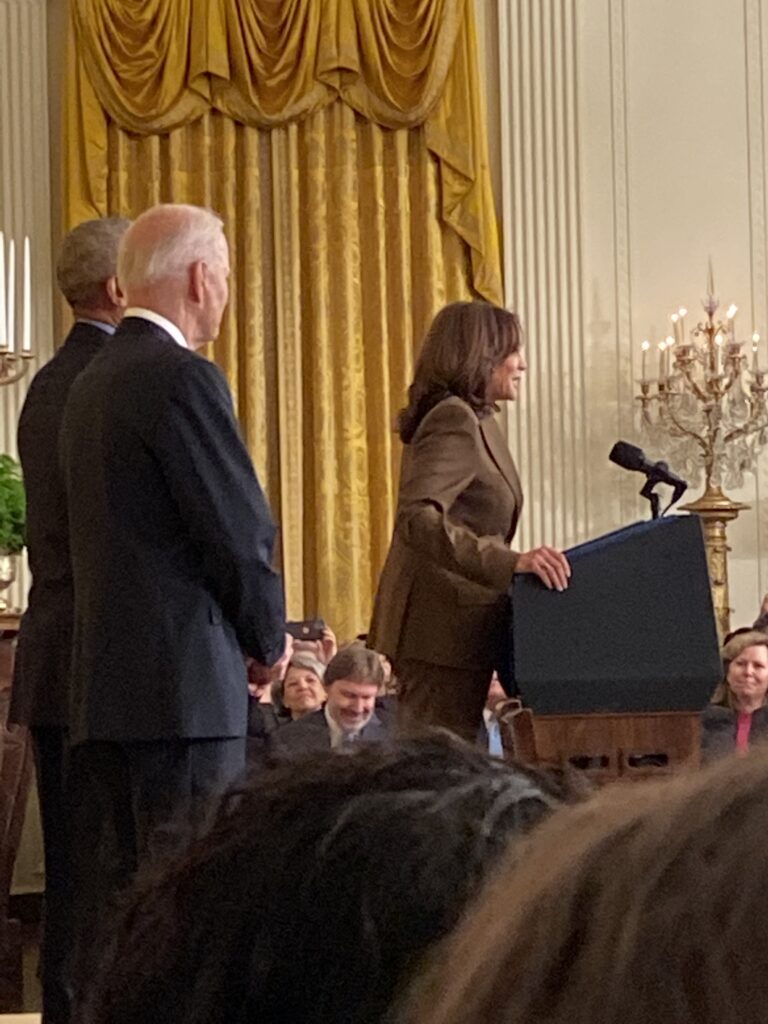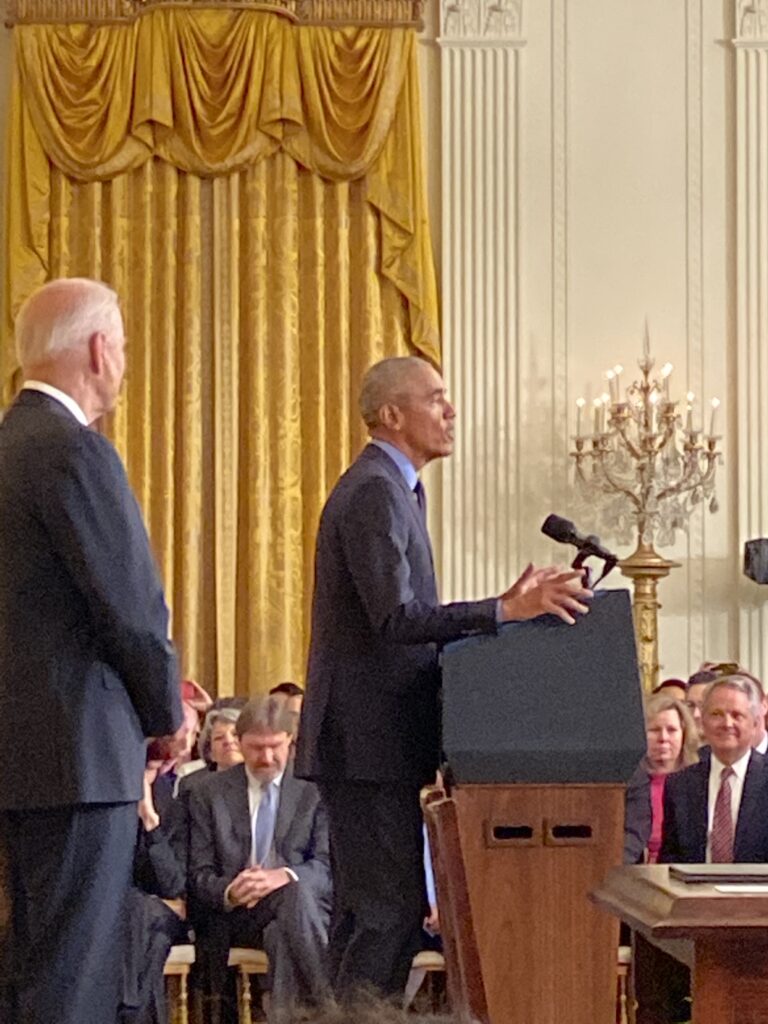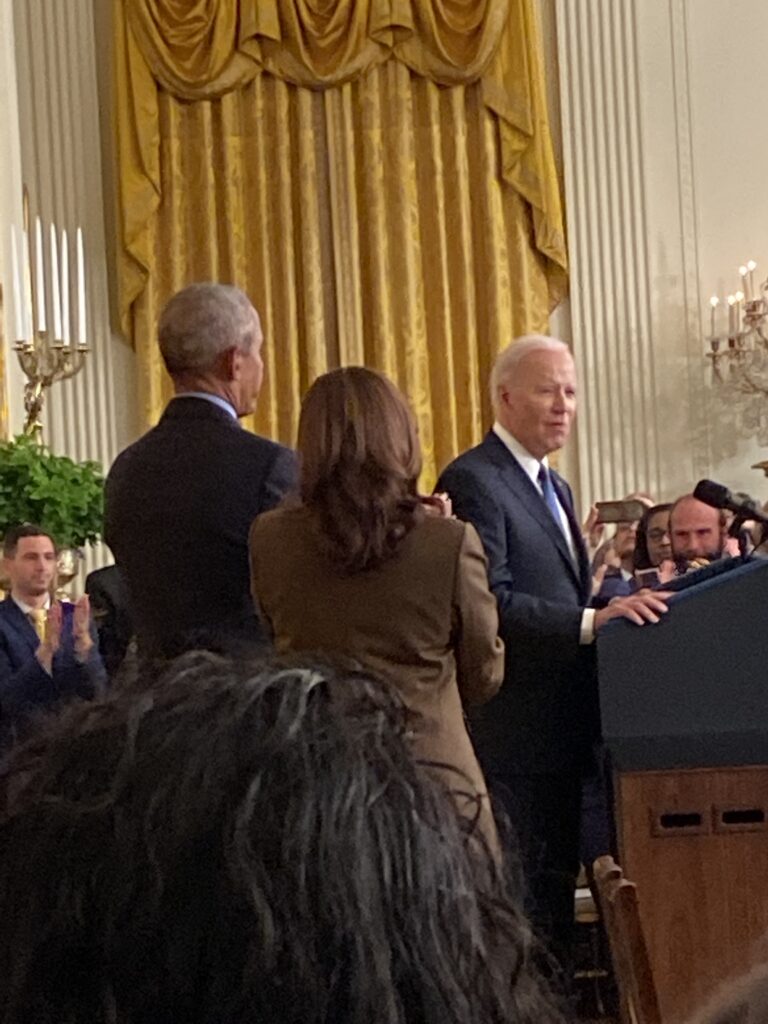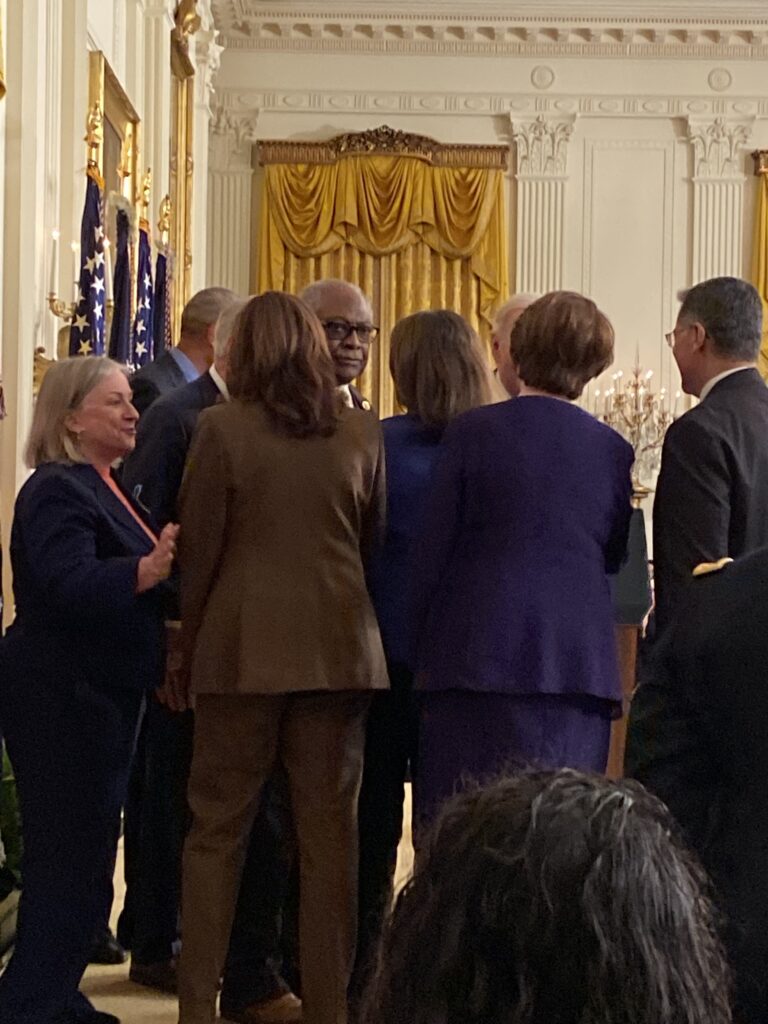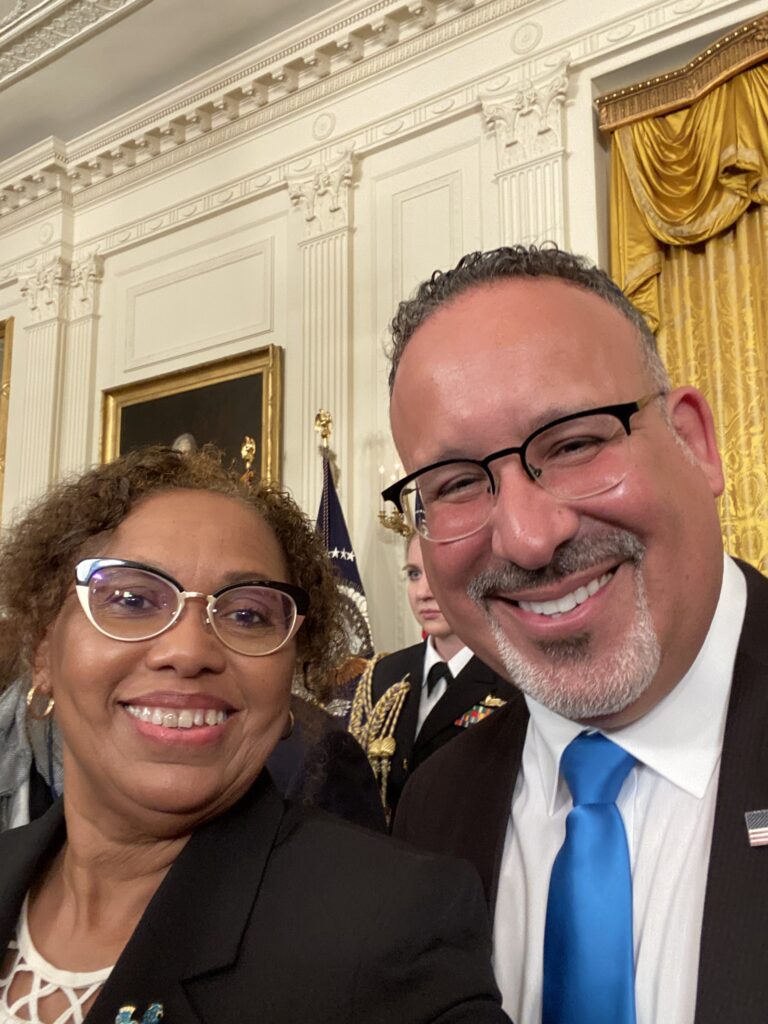By Sheila Caldwell, BSN, RN, CSN-NJ
What would you think if you are staying in step with the beat and completing some of the additional moves that have been asked of you only to have the music stop on Friday, April 1? Why? You get a request to be a part of the dance troupe at the White House!
You’d think it’s an April Fool’s joke, right?
Well, think differently! Nearing the end of a busy day I was informed that I was to represent NEA at the signing of an executive order by President Joe Biden for the Strengthening of Medicaid and Expansion of the Affordable Care Act (ACA). I had to read the message a few times. I thought it might not be real. I contacted my NEA supervisor to clarify.
On Tuesday, April 5, I was boarding a train to go to the White House for the event. I’ve always had the aspiration of visiting the White House and had heard how many school districts over the years had made it a trip, but when I was growing up my school district didn’t.
The actual signing was supposed to take place in the Rose Garden. The rain changed the location to the East Wing Reception Room. This allowed me to be able to view White House’s ornate and historic interior. It was truly an honor to be able to get inside after always wondering what it was like.
The significance of the Affordable Care Act
Now, you might wonder the significance of sending me to the White House for this signing. It has such relevance for children, parents, and each of you as individuals. ACA has been a saving grace for so many, who didn’t have health insurance over the past 12 years.
When President Barack Obama signed the Patient Protection and Affordable Care Act in 2010, it seemed destined to fail. It was the first piece of legislation designed to expand health insurance coverage and regulate insurance industry practices in over 50 years. Today it is thriving, with over 30 million people benefiting from its existence. Surely, you know someone who has benefitted from the ACA, or even Medicaid for that matter. You can read about the executive order signed by President Biden and its provisions by clicking here. There are important highlights in it that will affect New Jersey specifically.
Medicaid and NJ FamilyCare
While you likely know who has benefited from the ACA being in place, especially during the pandemic, you likely haven’t thought about what Medicaid means for the families and children in our communities.
Did you know that schools must annually ask families if they have health insurance and offer referrals to NJ FamilyCare, our state Medicaid program? Schools have to report this information to the state, and parents are then contacted to consider enrolling their children (click here). It’s all about affording all children equitable coverage.
Something else that you may or might not be aware of is the Special Education Medicaid Initiative (SEMI). This initiative allows school district to obtain state Medicaid funding to support the related services as long as the school district doesn’t waive out of the process for students with IEPs. It allows an added funding stream to continue services (Click here).
Understand that the per service percentage is not the exact amount that Center for Medicare & Medicaid Services (CMS) provides, but the money does add up as long as there is proper documentation in the student’s IEP (and attached individual health plan or IHP) and that the services provided are correctly logged and reported.
I have had interest in schools and Medicaid for quite some time. In my last inquiry to the New Jersey Department of Treasury in 2017, I was informed of this breakdown:
- New Jersey has a bundled rate methodology and has only one rate for related services (speech, OT, PT, nursing, psychological and audiological). The same rate is used for in district and out of district.
- Related Service Rate at Gross: $61.98
- Related Service Rate at Net: $30.99
- LEA share of the net is 35 percent: $10.85
- State share of the net is 65 percent: $20.14
This rate is based on a per hour of service model. For example, if a student has it written in their IEP/IHP that they visit the school nurse for tube feedings that take 20 minutes twice a day, the reimbursement would be $7.23 a day. That would mean if the student is not absent, the school would acquire $1,301.40 for the school year. And it is highly likely that this same student has other services. There are also other services such as evaluations/early and periodic screening, diagnostic and treatment (EPSDT) services that can be submitted for reimbursement.
There are two extremely important aspects to Medicaid reporting in addition to detailed documentation of services in the IEP: accurate documentation and entering of correct billing codes required by the Centers for Medicare and Medicaid (CMS).
New Jersey has gotten in trouble for this at least three times that I am aware of:
- November 2017 – New Jersey claimed hundreds of millions in unallowable or unsupported Medicaid school-based reimbursement (click here)
- November 2019 – New Jersey improperly claimed tens of millions for Medicaid school-based administrative costs based on random moment sampling that did not meet federal requirements (click here).
- March 2022 – New Jersey Medicaid school-based cost settlement process could result in claims that do not meet federal requirements (click here)
The March 2022 story is troubling as New Jersey has been informed that for a base assessment nothing has changed since 2017! It’s troubling to me, and likely to you, when we know the money must be returned to CMS with possible penalties.
When is the system going to be corrected so that the children in our schools can benefit? It boggles my mind. There are states, however, where the process is running effectively and efficiently. I have spoken with a few model districts in those states to learn how the process should work.
This is an educational equity issue
I know my entry has gotten a bit technical, but this is all about equity and affording children the free and appropriate public education (FAPE) that the law requires. It is about what strengthening of Medicaid through President Biden’s executive order could mean for schools. That’s why I encourage you to continue reading as you will surely learn other important information as it relates to Medicaid and schools.
New Jersey schools have been reporting via the SEMI reporting electronic process, but there was a significant rule change to CMS Medicaid in 2014 that allows states the option to provide reimbursable physical and behavioral health care services to any student who is enrolled in Medicaid. This amazing rule change means that billing would include students who do NOT have IEPs in addition to those who do. This may include students with 504s or other related service needs and could me reimbursement for some of the EPSDT screenings/evaluations.
This rule change has increased the reimbursement in some states, enabling school districts to hire additional nurses, counselors, social workers, etc. This funding is in addition to the funds from the more recent, but temporary CARES, CARES2 and ESSER funds. This is a more permanent funding stream to address equity. You can read the rule by clicking here.
New Jersey is not yet taking advantage of new rule
New Jersey has not taken this new rule into account. Our Medicaid program still only allows for districts to receive reimbursement for students with IEPs. There really needs a full effort to have New Jersey participate.
I had hoped when the state allowed for doulas to be directly paid that this would also have been considered. I have had numerous conversations about the challenges and benefits with several individuals with influence in New Jersey. There is even an alliance that is “pounding the pavement” for the change in states. This alliance has been in effect for a number of years and you can learn more about the group and see the partners by clicking here.
Most importantly, the “Healthy Schools Campaign” has been the leading force of advocacy. They released a new website that provides Medicaid eligible school nursing and behavioral health services providers in each state. Take a look at all the information and share it. Schools should be looking at all the components of services especially with the need for increased mental health and nursing services in schools.
The reimbursements can help improve the care our students so desperately need. New Jersey can only bill for the students, who have both Medicaid and IEPs. Let’s hope enough people read this and want to join in the efforts to change New Jersey’s rules so that all students with Medicaid benefit. Take a look at the website and note the states that have recently reversed the rule. You can more specifically follow the states that have reversed the Free Care Rule. It is updated monthly and can be accessed by clicking here.
Although, this entry started out by me being sent to the White House on behalf of NEA, the visit provided the opportunity for me to discuss Medicaid and ACA with you. Many of us do not follow what goes on in agencies and politically, but ultimately these agencies and politics affect us or a loved one.
I spoke briefly U.S. Secretary of Education Miguel Cardona about SISPs, ESPs and our importance in the school setting.
As this song still continues to play in the background, know that I am preparing for the next stage.
Sheila Caldwell is a certified school nurse in the Matawan Aberdeen Regional School District. She is on leave to participate in the SISP Fellowship described in this article. In addition to receiving numerous national and local awards, Caldwell has received the American Academy of Pediatrics-NJ Chapter School Health Advocate of Year (2016) and the 2021 National Association of School Nurses (NASN) Recognition Award for “continued support and unique contributions to NASN and school nursing.”
Caldwell can be reached at SCaldwell@nea.org.
